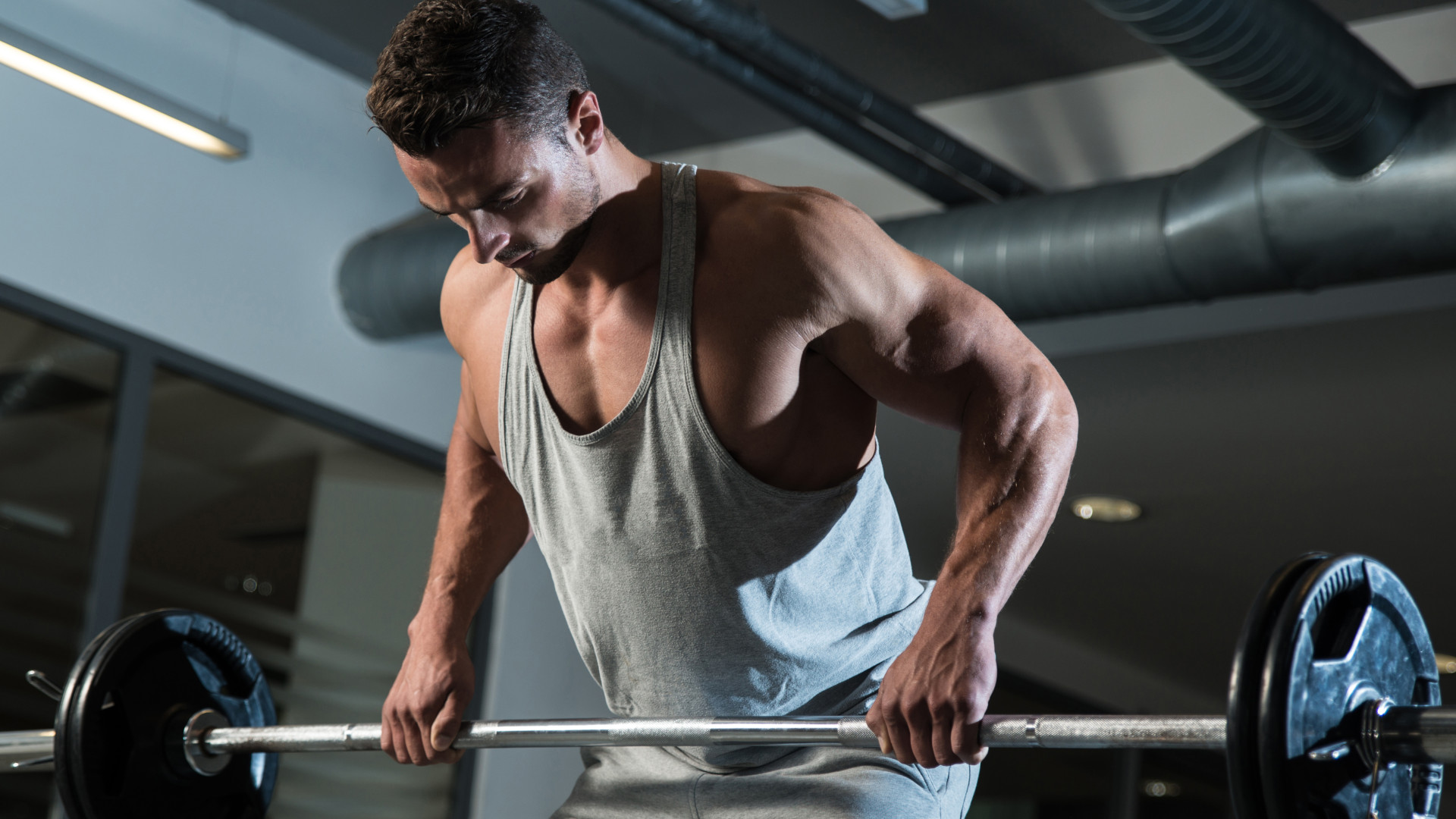
Looking for a new exercise that not only adds width to your back but biceps too? Let us introduce you to the Yates row. It’s a variation of the standard barbell row with a few tweaks that, not only reduces the load on your lower back, but adds more intensity to the biceps too.
This version of the row was created by six-time Mr. Olympia bodybuilder, Dorian Yates, who, let’s just say had a pretty phenomenal back and could row a whopping 405 pounds! It’s almost identical to your bent-over barbell row, however, Yates would perform his row with more upright torso (45-degree angle) and hold the barbell with an underhand grip.
While bent-over rows are often hailed as ‘the best’ exercise for building a superhero-shaped back, many people often struggle with the stress it can place on the lower back, especially when not performed with the correct form. Whereas in a blog post, Yates says that his subtle tweaks to the row: “puts the lower back in a safer position and the lats in a mechanically stronger position.”
But these changes bring other benefits too. "Firstly, the shift from an overhand grip to a supinated one means you are moving the focus away from your wrist and forearm strength and bringing your biceps more into play," says Eddie Baruta, Global Head of Gym Floor Training at Ultimate Performance.
“It also hits your upper back muscles in a more direct way than a traditional 90-degree bent-over row, which – because of the angle – targets the lower back and hamstrings more effectively than the Yates counterpart. So, if adding mass to your upper back is the goal, then opt for a Yates row."
As the Yates row also starts at the knees, rather than the floor, it has a shorter range of motion than the bent-over row, meaning you should be able to shift more weight too. Want to give it a go? Here's how you do it.
How to perform the Yates row
As we mentioned earlier, you’ll need a barbell for this row variation, so it’s best performed in a gym environment. We advise not using any lifting accessories to help you execute this movement to start with (such as lifting straps) so that you can build up your grip strength, which is important for executing other exercises and everyday tasks. However, Yates was a fan of heavy weight loads so he used straps to help him push out more reps, so he could push his muscles to failure.
Here's how you perform the Yates row...
- Stand close to the barbell, with your feet hip-width apart, hinge down (as if performing a deadlift) and pick the bar up with a supinated grip (palms facing away from you)
- Bend slightly at the knees and hips, whilst keeping your chest up, the barbell should just above your knees
- There should also be a natural curve in your lower back
- Row the barbell towards your belly button, keeping your elbows tucked in and retracting your shoulder blades
- Hold here for a second then, with control, lower the barbell back to the starting positon







